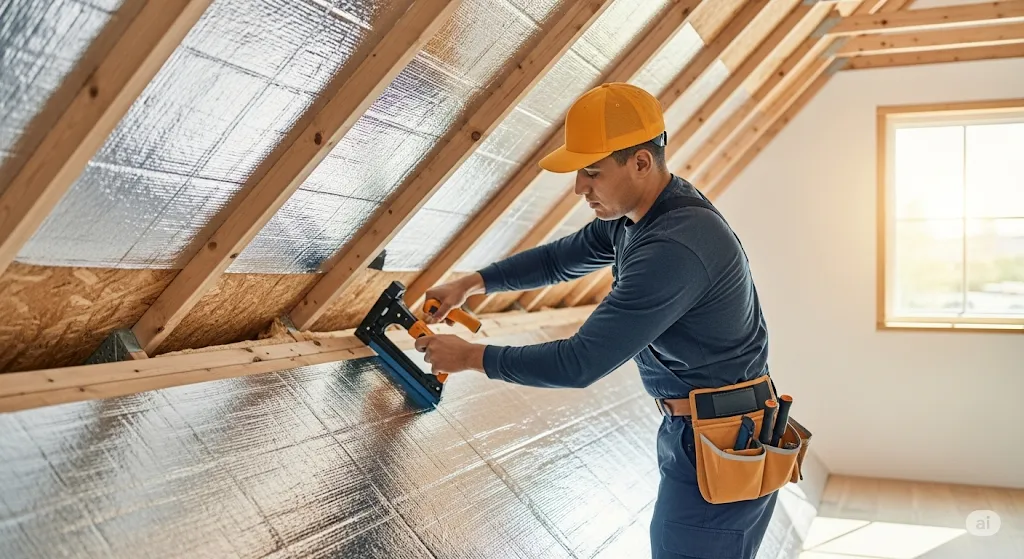
Radiant Barrier Insulation: Complete Guide & Real-World Benefits
You might not give your attic much thought—until it gets hot enough to cook an egg up there. Here’s the thing: if your home bakes under the sun, traditional insulation alone can’t keep up. That’s where radiant barrier insulation comes in.
What Is Radiant Barrier Insulation?
Radiant barrier insulation is a thin, reflective material—usually shiny aluminum foil—installed in your attic or roof. Its superpower isn’t about trapping heat, but about bouncing it back. Instead of absorbing the sun’s heat, a radiant barrier sends it packing, keeping your attic and home cooler.
How Does Radiant Barrier Insulation Work?
Most attic heat comes from the sun’s rays heating your roof. That heat wants to radiate into your attic and then down into your living space. Radiant barrier insulation reflects up to 97% of that radiant heat away from your home.
The result?
Less heat in your attic
Lower indoor temps
Your AC doesn’t have to work as hard

Types of Radiant Barrier Insulation
There are a few main styles:
Foil Sheets or Rolls:
The classic. Rolls of shiny foil that staple to the underside of your roof rafters.Foil-Faced Panels:
Rigid insulation boards with a reflective layer—great for new construction.Spray-On Barriers:
Less common, but used in tricky spaces where sheets won’t fit.
For most existing homes, foil rolls are the easiest and most cost-effective.
Real-World Benefits
Lower Energy Bills: Your AC runs less, especially in summer
Cooler Attic, Cooler House: Noticeably less stuffy, even on hot days
Works with Your Existing Insulation: It’s not either/or; radiant barriers boost what you’ve already got
Moisture Resistance: Foil doesn’t hold water or mold
Lightweight and Hassle-Free: Installs quickly and lasts for decades
How to Choose the Right Radiant Barrier Insulation
Don’t let marketing hype confuse you. Here’s what matters:
Climate: Hot, sunny regions see the biggest benefits
Attic Layout: The more open, the easier the install
Material Quality: Go for thick, tear-resistant foil with proven reflectivity
DIY or Pro: If you’re comfortable in the attic, DIY is totally possible
Installation Tips
Always install with the shiny side facing open air for max reflection
Leave attic vents open—airflow is crucial
Staple or tape sheets to rafters; don’t lay flat on insulation
Use safety gear (attics aren’t for the faint of heart)
Follow manufacturer’s directions for best results
Common Mistakes to Avoid
Blocking vents with foil (heat needs a way out)
Installing in cold climates expecting year-round savings
Choosing cheap, flimsy foil that tears or sags
Covering the foil with other insulation (eliminates the reflective benefit)
FAQs
Is radiant barrier insulation a replacement for regular insulation?
Nope—it’s a booster. Use it alongside your current insulation for best results.
Will it help in winter?
Not really. Radiant barriers are designed for summer heat and sunny climates.
Can I install it myself?
If you can handle tight spaces, sure. Just be careful and watch your step!
Conclusion
Radiant barrier insulation isn’t magic—it’s just science that works. If you want a cooler attic, a more comfortable home, and smaller energy bills, it’s a smart move.
Want advice, a quote, or the straight facts? Contact us here or email [email protected]. We’re here to help, no pressure.